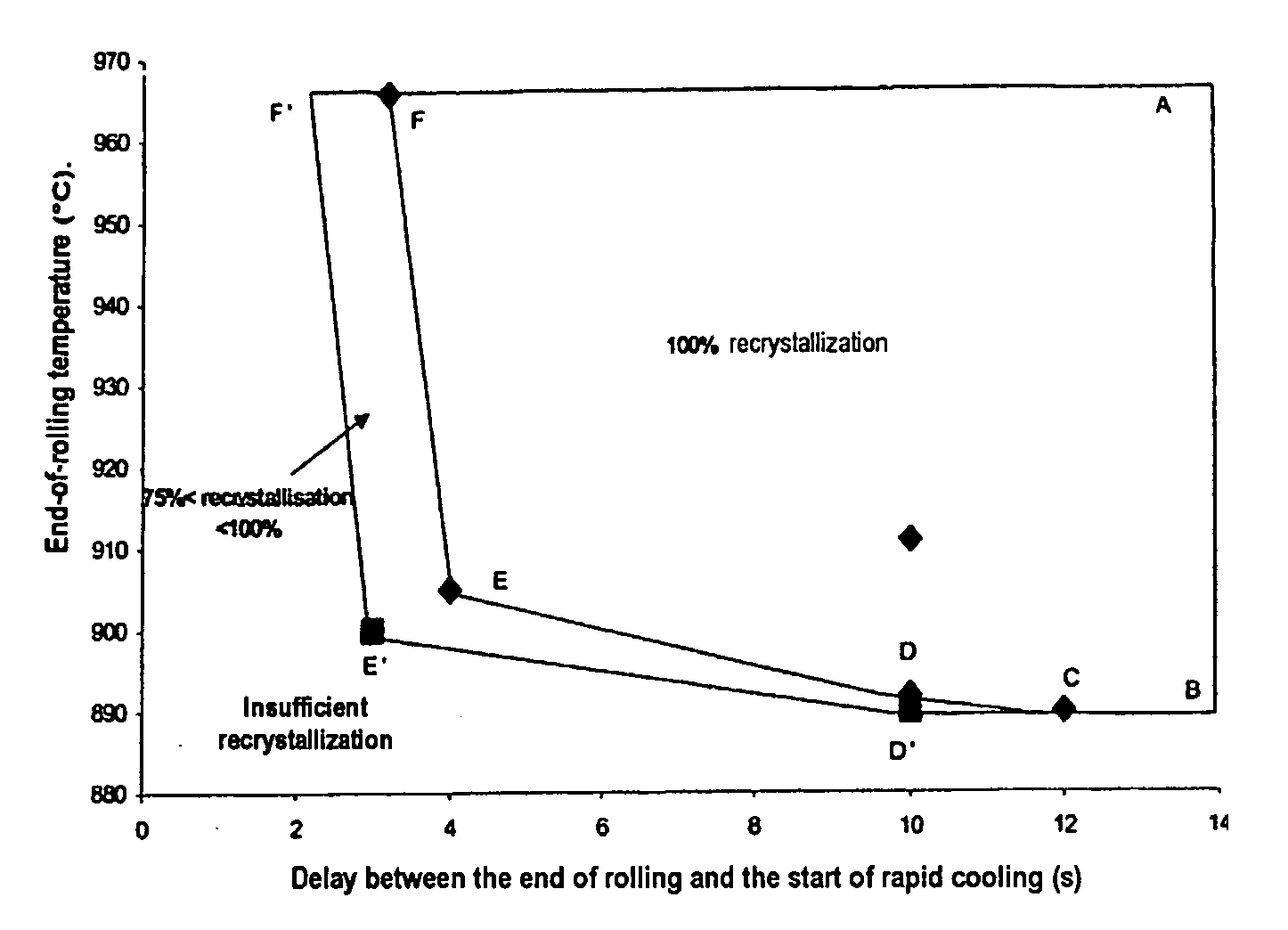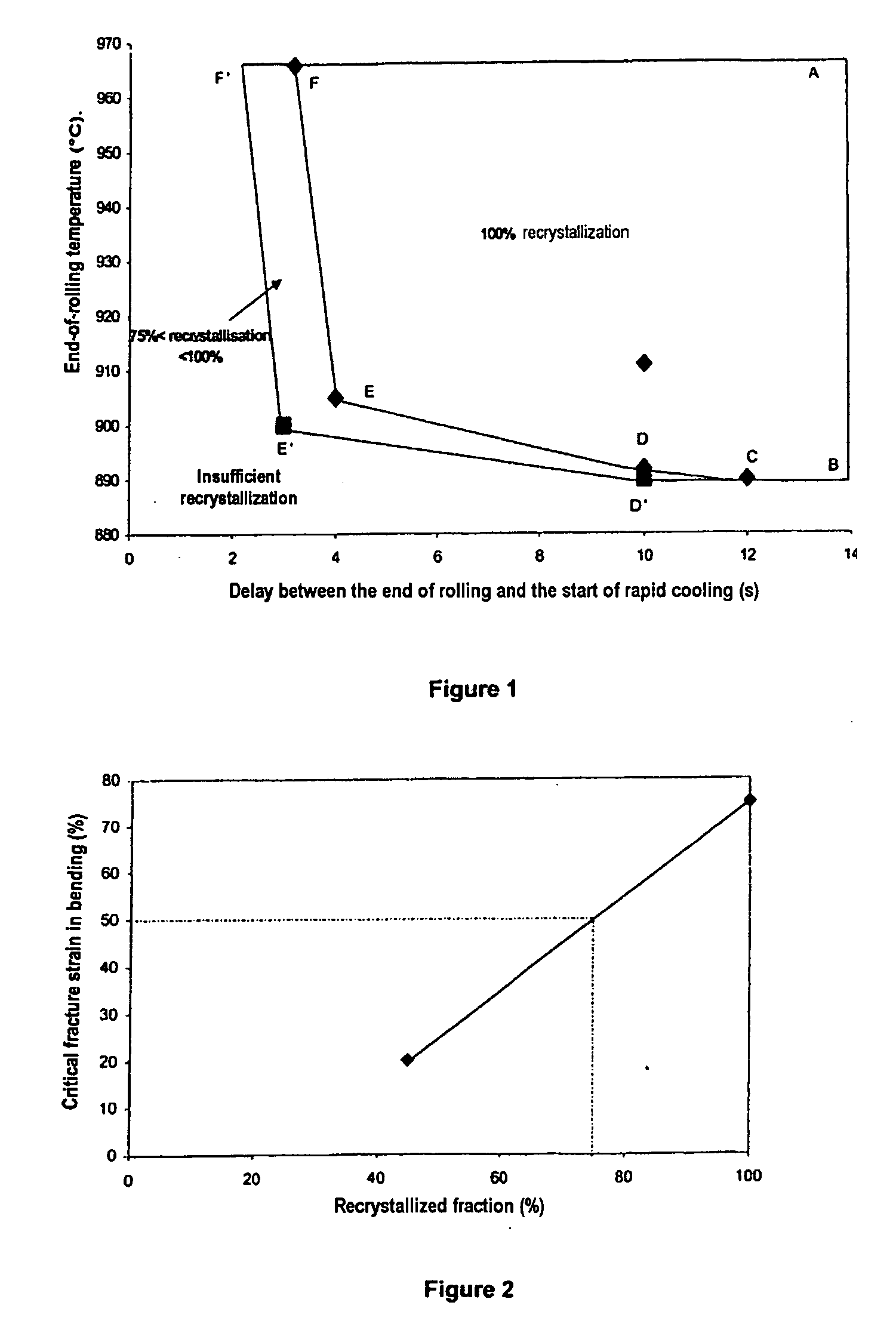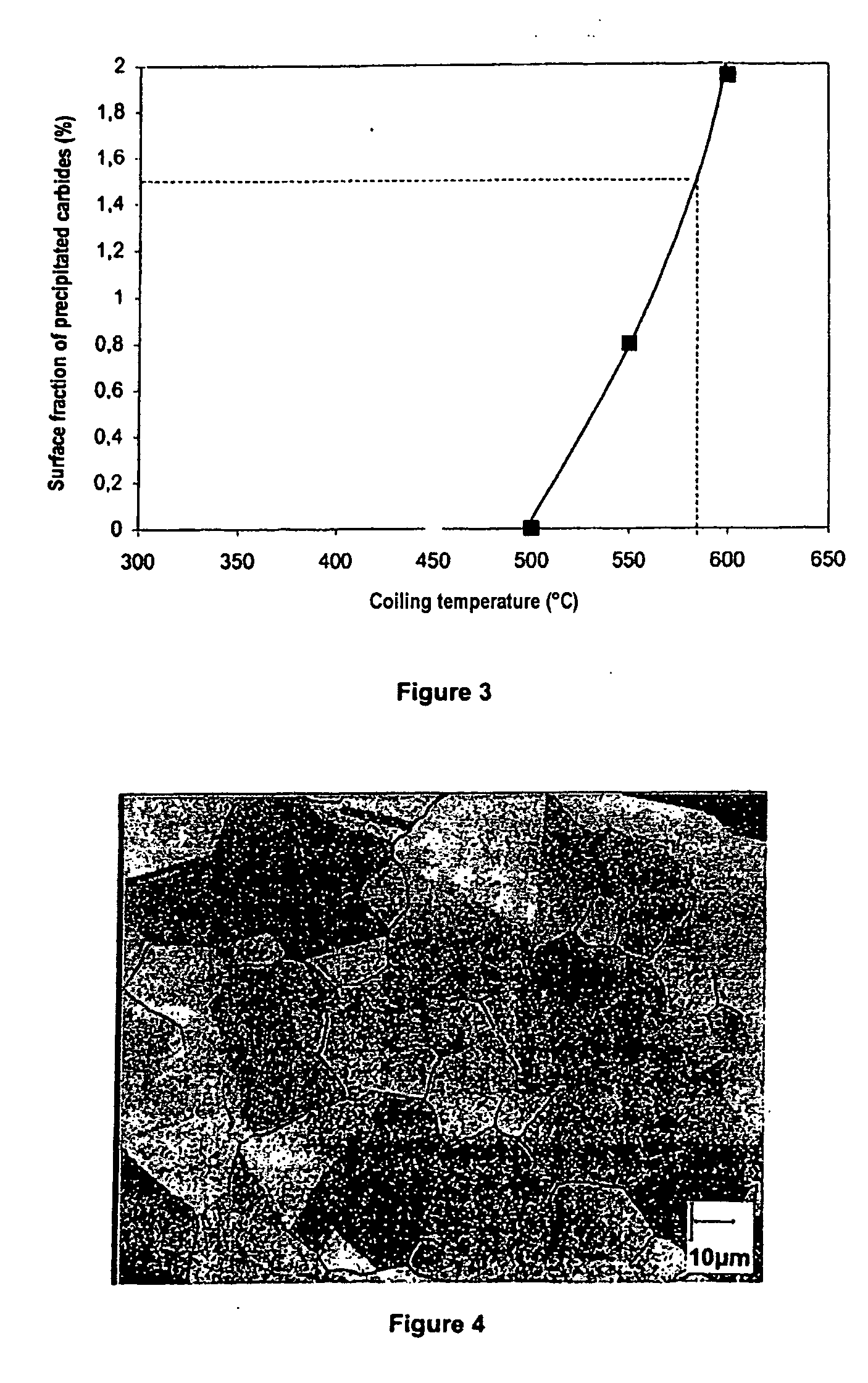Electrode for fuel cell, and methods for manufacturing these
a fuel cell and electrode technology, applied in the field of electrodes for fuel cells, can solve the problems of insufficient elongation, inability to obtain very high values for one of the properties, and steel that cannot achieve an elongation greater than 25%, and achieves the effect of good toughness and low manufacturing cos
- Summary
- Abstract
- Description
- Claims
- Application Information
AI Technical Summary
Benefits of technology
Problems solved by technology
Method used
Image
Examples
example 1
[0058] A steel of the following composition (contents expressed in percentages by weight): C: 0.6%; Mn: 22%; Si: 0.2% was smelted. A semifinished product was heated at 11850C and hot-rolled at a temperature of 9650C so as to achieve a thickness of 3.6 mm. A hold time of 3.5 s was observed before cooling. The coiling was carried out at a temperature below 450° C. The manufacturing conditions, identified by “I ” in Table 1 below correspond to the invention. The mean grain size thus obtained was 9.5 microns, the structure was 100% recrystallized and the fraction of carbides was 0%. The static mechanical properties obtained on this hot-rolled sheet were particularly high, namely strength: 1012 MPa; elongation at fracture: 65.4%; product P: 66184.
[0059] Starting with this same composition, a thermomechanical scheme not corresponding to the conditions of the invention was performed, which resulted in a surface fraction of precipitated carbides of greater than 1.5% (condition identified a...
example 2
[0063] Steels with the compositions indicated in Table 2 below were smelted (compositions expressed in percentages by weight). Apart from steels I1 and I2, the composition of reference steels is given for comparison, these being dual-phase steel (R1) and TRIP (Transformation Induced Plasticity) steel (R2), the strength level of which (1000 MPa) lies within a similar range.
[0064] Semifinished products of steels I1 and I2 were reheated at 1200° C., hot-rolled at a temperature of 920° C., in order to bring them to a thickness of 3 mm, and then, after a hold time of 10 seconds before cooling, coiled at a temperature of 450° C. The mean grain size obtained under these conditions was 10 microns. The structure was completely recrystallized, with no precipitated carbides.
TABLE 2Composition of the steelsSteelCMnSiSPAlCuCrNiMoNI10.6121.50.490.0010.0160.0030.020.0530.0440.0090.01I20.6822.80.170.0010.0040.0050.0050.0050.0050.010.003R10.191.90.330.0030.030.0250.0190.020.09R20.201.71.60.0030.0...
PUM
| Property | Measurement | Unit |
|---|---|---|
| Grain size | aaaaa | aaaaa |
| Grain size | aaaaa | aaaaa |
| Temperature | aaaaa | aaaaa |
Abstract
Description
Claims
Application Information
 Login to View More
Login to View More - R&D
- Intellectual Property
- Life Sciences
- Materials
- Tech Scout
- Unparalleled Data Quality
- Higher Quality Content
- 60% Fewer Hallucinations
Browse by: Latest US Patents, China's latest patents, Technical Efficacy Thesaurus, Application Domain, Technology Topic, Popular Technical Reports.
© 2025 PatSnap. All rights reserved.Legal|Privacy policy|Modern Slavery Act Transparency Statement|Sitemap|About US| Contact US: help@patsnap.com



